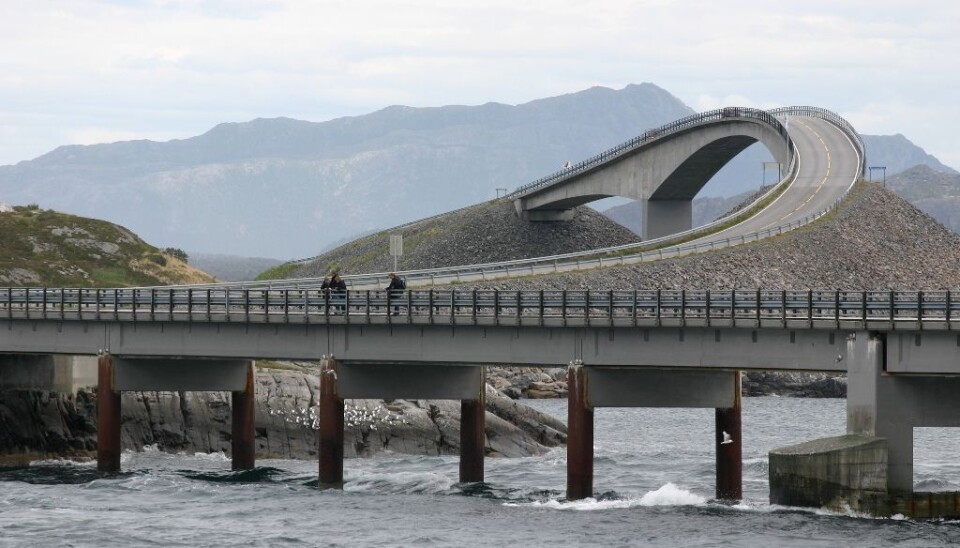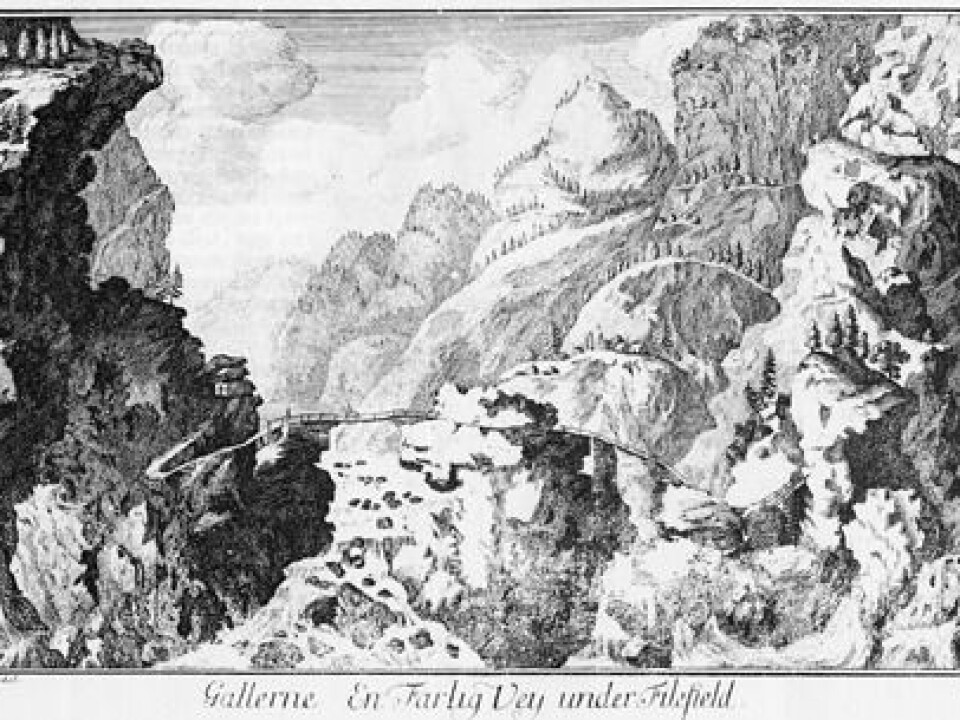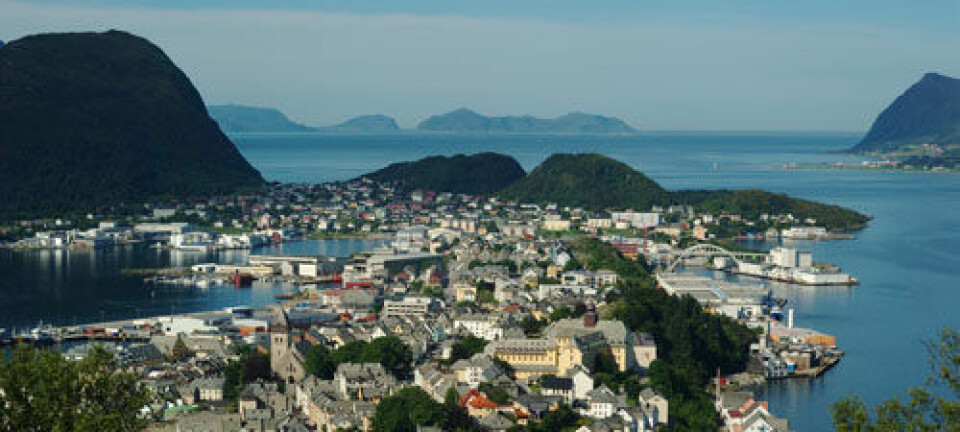This article was produced and financed by The Research Council of Norway

Conception of landscape shaped today’s transport routes
In the 1800s the natural landscape began to be seen as beautiful as opposed to primitive, wild and inaccessible. This changing public perception played a major role in the development of new travel routes in Norway.
Denne artikkelen er over ti år gammel og kan inneholde utdatert informasjon.
In the 1800s there was a shift in the conception of the landscape in Norway. Whereas people had previously viewed the country’s wild nature as frightening and ugly, they gradually began to see it as something beautiful.
This change is well studied internationally, but has received much less attention in a Norwegian context.
In the project “Routes, Roads and Landscapes”, a research group headed by Professor Mari Hvattum of the Oslo School of Architecture and Design has studied how the modern Norwegian landscape has been given increasing aesthetic value from the 1800s to today.
Link between view of nature and development of infrastructure
The project was carried out by a group of researchers who had previously studied the understanding of landscape and nature respectively, from a variety of disciplinary perspectives such as architecture, art history, history of science and philosophy.

The project team discovered some exciting links between the development of new roads, railways and paths and the emergence of a new aesthetic view of the landscape.
At the same time as the concept of nature was changing, the wide-ranging expansion of Norway’s roads and railways was noticeably altering the landscape. The research team concluded that the reciprocal relationship between road design and the concept of landscape was a core element in the processes of change taking place.
“Others have studied either road-and-railway development or changes in the conception of nature separately, but the connection between these elements has not received much attention. This is precisely what we examined in our project,” explains Professor Hvattum.
“How have new transport routes affected the way in which landscape is construed, and how has this altered view of nature affected the way in which the transport routes transform the landscape?”
Technology and aesthetics hand in hand
One striking finding is the close ties between the engineers, architects and artists of 19th century Norway. They all took the same basic education and socialised with each other in art societies and salons of the time.

"We can see that they developed what we could call a shared eye for the natural landscape while, for instance, attending the royal drafting school in the Norwegian capital of Christiania (now Oslo)," says Hvattum.
“Many of those in charge of the construction of roads and railways were also working artists,” continues Professor Hvattum. “Carl Abraham Pihl, for example, the first director of Norway’s national rail service, was a significant landscape photographer in addition to heading up the construction of new railway lines starting in the 1860s. Engineer Theodor Broch not only wrote a textbook on the art of road construction but was also chairman of the Christiania Arts Association, a main promoter of modern landscape painting.
Technology and aesthetics influenced each other reciprocally. It began to dawn on on the researchers that it was not just the new transport routes that redefined the landscape; it was just as much that the landscape – or more precisely the new concept of landscape in the 1800s – influenced the planning and construction of roads and railway lines.
“The road and railway development of the 19th and 20th centuries was thus not an isolated, technocratic endeavour, but rather a practice firmly rooted in the cultural sphere and heavily influenced by an awakening sense of nature,” says the reseacher.
Aesthetics as part of the communication revolution
Art and aesthetics played a central role in the communication revolution that was so essential to Norway’s evolution into a modern society.
The new roads were in themselves important symbols of aesthetic ideals. At the same time, they were very significant in that they allowed access to the landscape so it could be perceived and staged in new ways.
As more and more Norwegians could afford to travel their own country, it became something of a public information project to teach the citizenry an appreciation of the beauty of the landscape.
Knowledge applicable today
Knowledge about the relationship between aesthetics and road design in the 19th century is also useful in modern road design.
“During the research project we have collaborated closely with the Norwegian Public Roads Administration, Norway’s central road authority. We discussed their aesthetic guidelines, among other things. In this way, our historical and critical viewpoint is directly relevant to current road builders,” concludes Professor Hvattum.
She presented the project during the KULVER programme’s concluding conference in Oslo in April. Researchers in the programme have studied the importance of aesthetics in assigning or changing cultural values. The main findings of the Routes team are presented in the collection Routes, Roads and Landscapes, published by Ashgate in 2012.
Translated by: Darren McKellep/Carol B. Eckmann
































